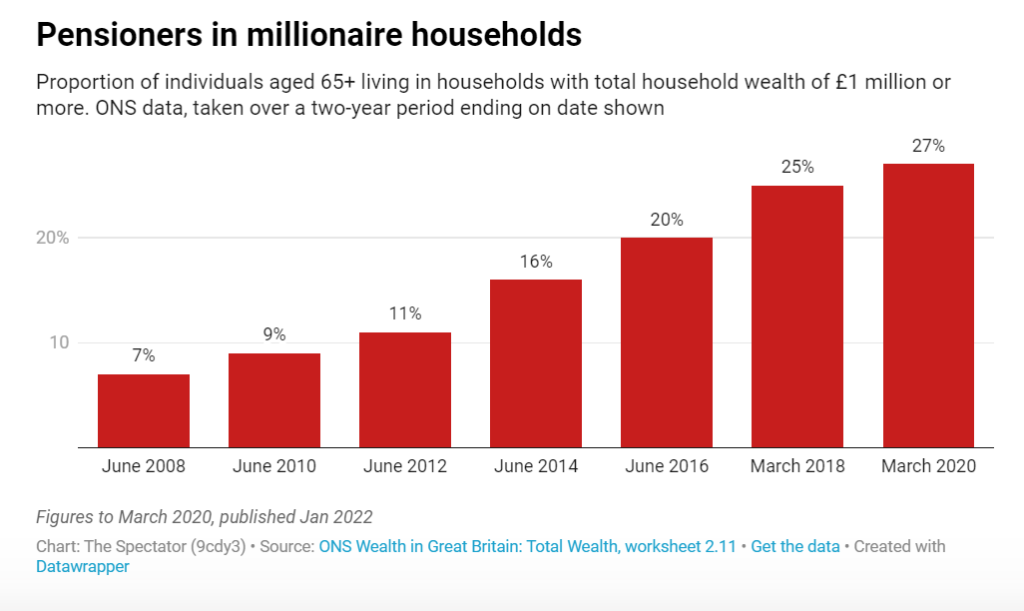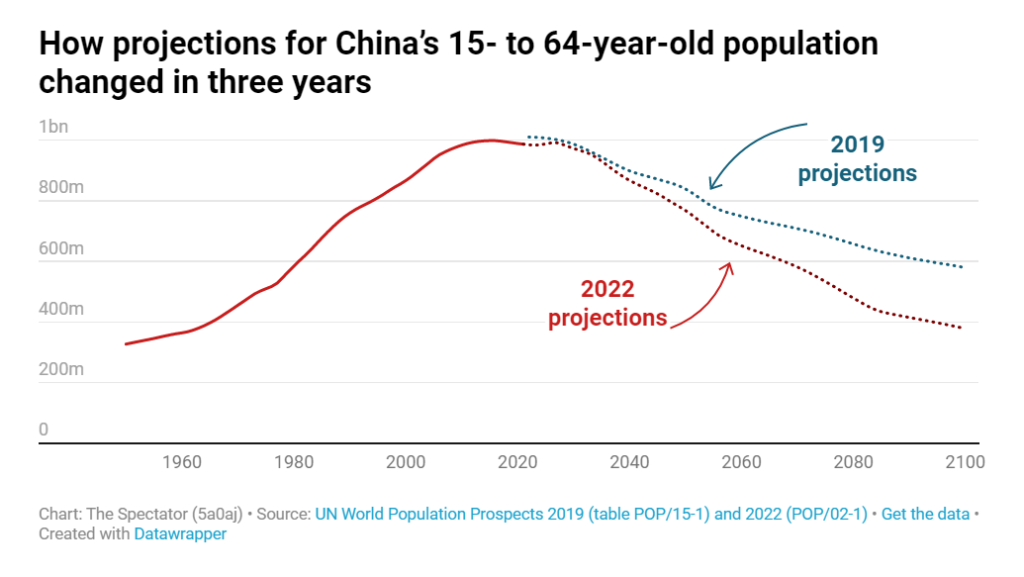Link: https://www.spectator.co.uk/article/the-pensions-triple-lock-will-condemn-britain
Graphic:

Excerpt:
The triple lock says that each year the state pension will increase by inflation, average earnings, or 2.5 per cent, whichever was highest in the year before. It is hugely popular with the Conservative party’s elderly base. It is also a fiscal and economic millstone around the British government’s neck.
The last two years have amply illustrated the basic problems with the design of the scheme. The first is that it was clearly not created with unusual economic circumstances in mind. In 2021, wages dropped in a short but deep recession. The next year, they went back up again. In economic terms, very little had changed. The rule used by the triple lock, however, treated this like a period of strong economic growth. If it had been left untouched, pensions would have increased by 8 per cent. And thanks to the ratcheting effect of the triple lock mechanism, they would have retained that boost against UK GDP into the long term.
In the end, the government ended up suspending the triple lock for a year, only to fall right into another unusual situation: stagflation, where economic activity stagnates but inflation skyrockets. Again, the triple lock recommends a large boost to pensions when government finances are already under strain, and again, this would lift up pensions as a share of GDP long term. And again, the government should suspend the rule to avoid this. But it seems Liz Truss has bottled it.
You would have thought it tempting for the Conservative party to wave these away as two unusual years; in normal times – when GDP, inflation, and earnings increase together – then everything would be fine, right? Well, no. The way the triple lock is designed means that whenever you have a downturn, pensions will tend to rise as a share of GDP. And whenever you have a boom, they keep pace. The net effect is a constant ratchet where pensions, in the words of the work and pensions select committee, take up an ‘ever-greater share of national income’.
This is not sustainable. Spending on the state pension is already set to rise significantly as a share of GDP over the coming decades; as the population gets older, there are more people claiming pensions and fewer working to pay for them. Add the triple lock into the mix, and you double the expected increase in demand. Scrapping the arbitrary 2.5 per cent element doesn’t do a lot to help, either; you still have significant growth through the ratcheting effects of the first two elements.
Author(s): Sam Ashworth-Hayes
Publication Date: 19 Oct 2022
Publication Site: The Spectator UK
